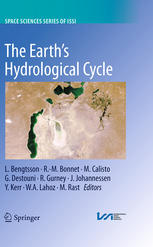

Most ebook files are in PDF format, so you can easily read them using various software such as Foxit Reader or directly on the Google Chrome browser.
Some ebook files are released by publishers in other formats such as .awz, .mobi, .epub, .fb2, etc. You may need to install specific software to read these formats on mobile/PC, such as Calibre.
Please read the tutorial at this link: https://ebookbell.com/faq
We offer FREE conversion to the popular formats you request; however, this may take some time. Therefore, right after payment, please email us, and we will try to provide the service as quickly as possible.
For some exceptional file formats or broken links (if any), please refrain from opening any disputes. Instead, email us first, and we will try to assist within a maximum of 6 hours.
EbookBell Team

0.0
0 reviewsThis book gives a comprehensive presentation of our present understanding of the Earth's Hydrological cycle and the problems, consequences and impacts that go with this topic. Water is a central component in the Earth's system. It is indispensable for life on Earth in its present form and influences virtually every aspect of our planet's life support system. On relatively short time scales, atmospheric water vapor interacts with the atmospheric circulation and is crucial in forming the Earth's climate zones. Water vapor is the most powerful of the greenhouse gases and serves to enhance the tropospheric temperature. The dominant part of available water on Earth resides in the oceans. Parts are locked up in the land ice on Greenland and Antarctica and a smaller part is estimated to exist as groundwater. If all the ice over the land and all the glaciers were to melt, the sea level would rise by some 80 m. In comparison, the total amount of water vapor in the atmosphere is small; it amounts to ~ 25 kg/m2, or the equivalent of 25 mm water for each column of air. Yet atmospheric water vapor is crucial for the Earth’s energy balance. The book gives an up to date presentation of the present knowledge.
Previously published in Surveys in Geophysics, Volume 35, No. 3, 2014